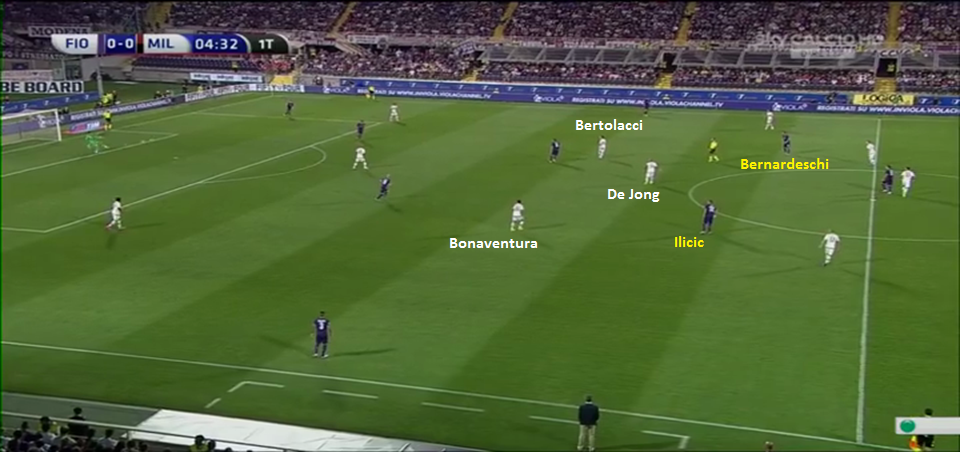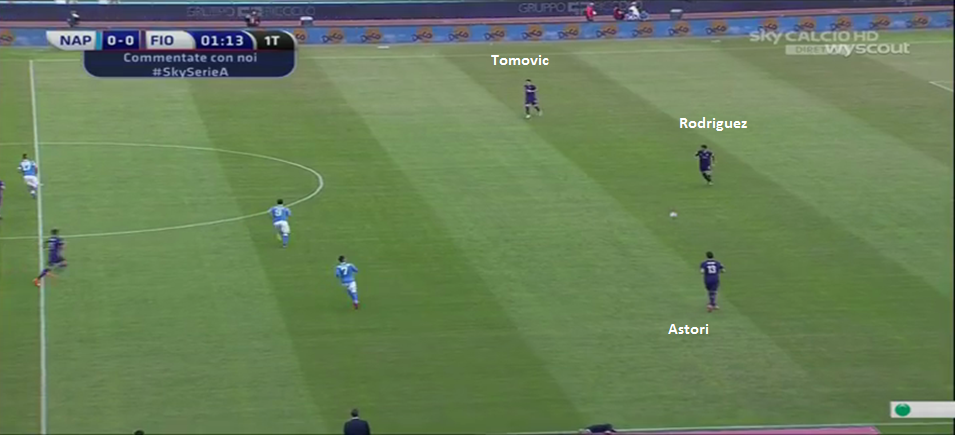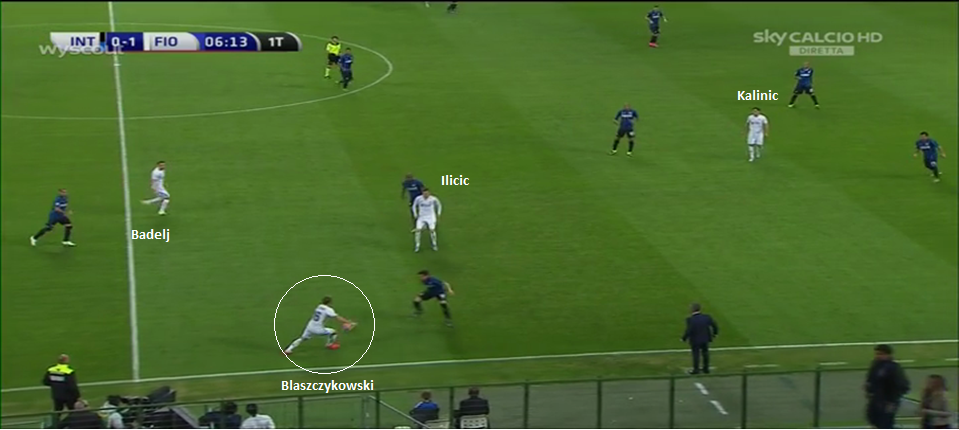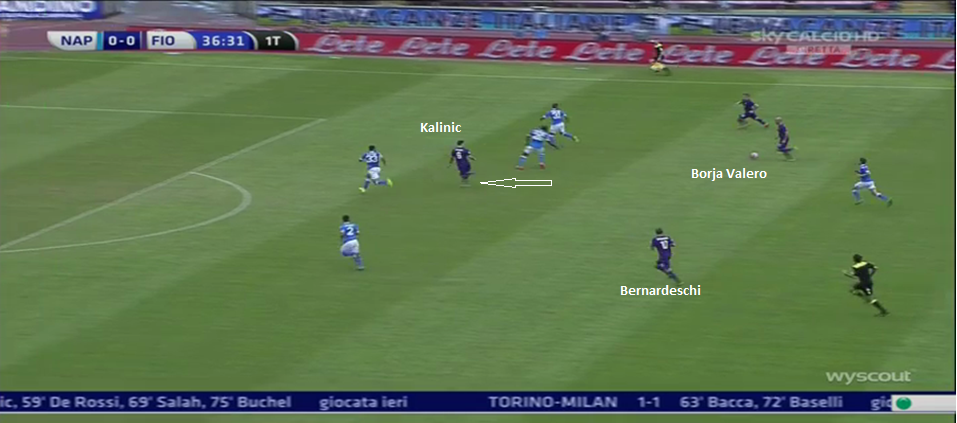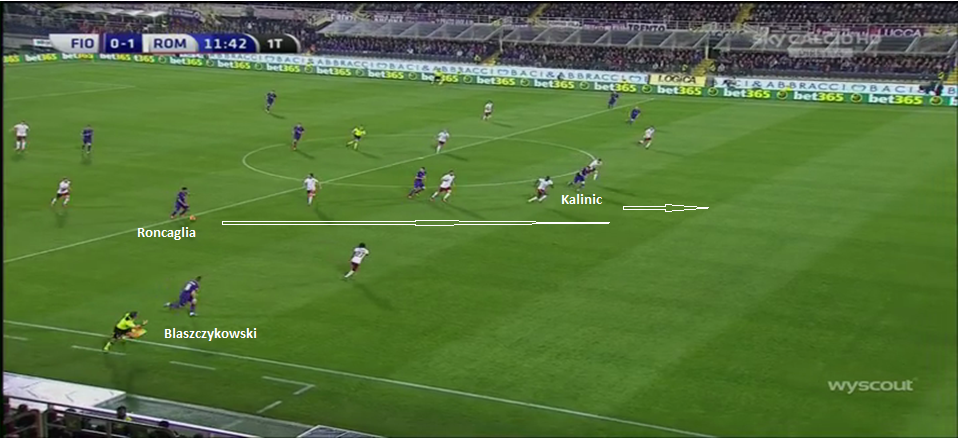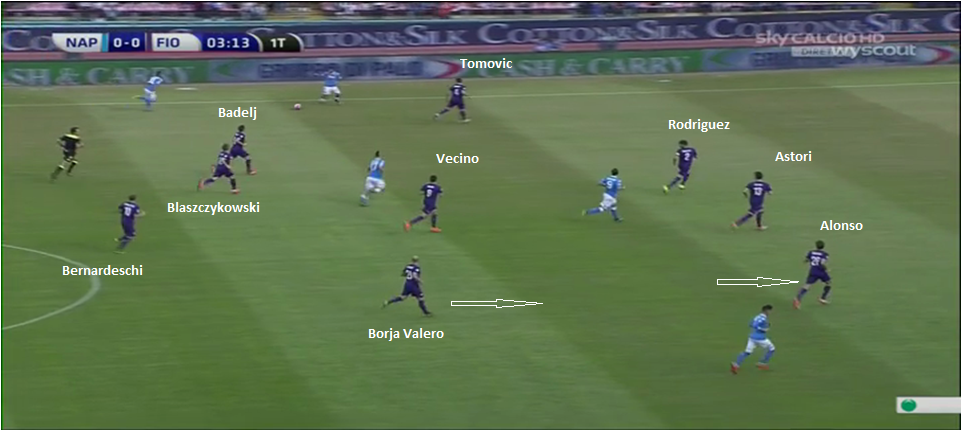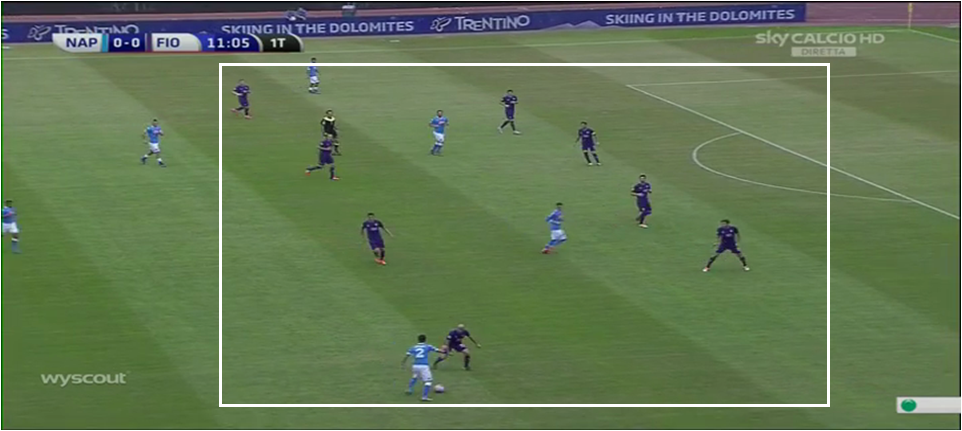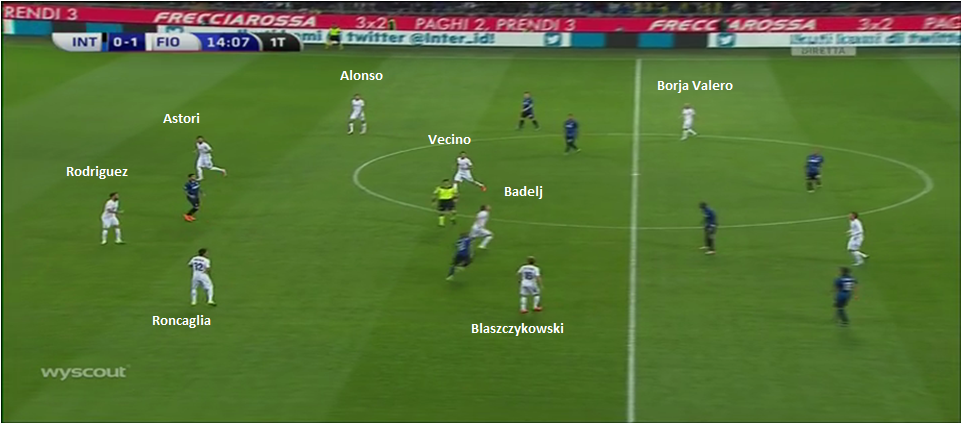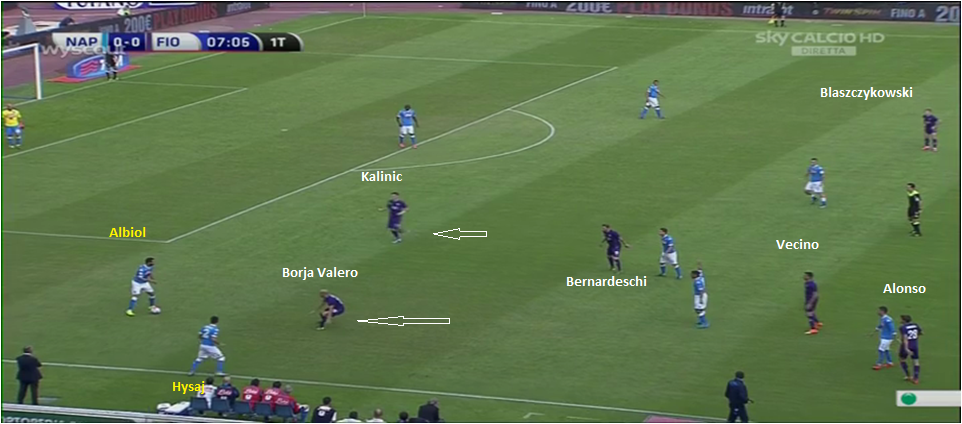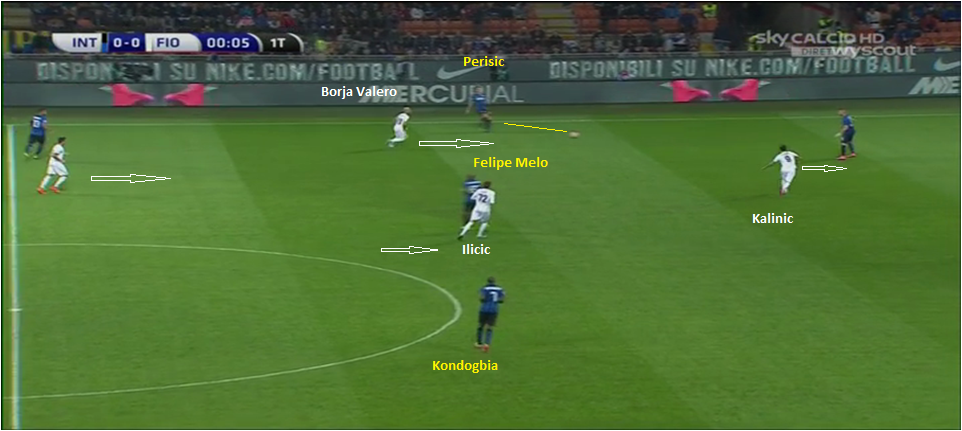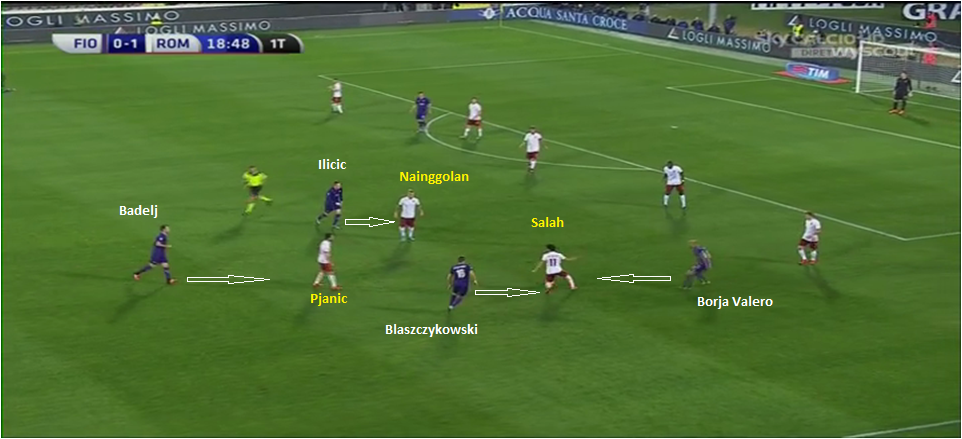Táctica / Italia / Análisis / Serie A / Fútbol / English
Fiorentina Analysis
FIORENTINA PLAYING THROUGH TRIANGLES AND INSIDE FORWARDS
Since joining the club last summer, Portuguese coach Paulo Sousa has designed an attacking-minded team who largely performed above expectations.
His side have been highly acclaimed this year by their possession game which has received massive praise.
Former Juventus midfielder built a high-tempo, passing team generally lined up in a 3-4-2-1 formation, putting emphasis on attacking from midfield.
“Put the good players in the midfield” was Pep Guardiola’s mantra on first year in charge at Bayern Munich. There is no disputing that Sousa followed Catalan coach’s idea, packing the midfield with a lot of skilful footballers.
In fact, former Basilea manager sticks his pattern with six creative midfielders: playmakers Matias Vecino and Milan Badelj occupying the central slots, while offensive wing-back Marcos Alonso is staying out wide on the left side.
On the other side, the No. 10 Federico Bernardeschi occupies an orthodox righ-wing role. Borja Valero and Josip Ilicic both play more centrally in an advanced position as inverted forwards put just behind the lone striker Nikola Kalinic. That said, contrary to statistic that ranks Fiorentina’s one of the best European teams in term of ball control, Sousa isn’t a fan of possession for possession’s sake. Instead, Sousa structured a team in which his players have to acknowledge how to retain possession and how to go vertically.
FIORENTINA’S SUPERIORITY IN THE MIDDLE OF THE PITCH
Fiorentina’s main system is built to overload the midfield, creating numerical superiority and supporting their passing game. The 3-4-2-1 system allows to build a lot of diamonds all over the pitch. Those diamonds are interconnected each others, allowing as many as three passing option to the ball carrier.
The high number of links between la Viola’s players not only gives them a lot of possible combinations but also make them able to develop an extensive and effective pressing. However, as mentioned above, it must be noted that offensive ball possession is just a weapon to open the penetration phase in the final third of the field. Both Vecino and Badelj are able to circulate the ball effectively, linking the three-man backline with the other midfielders.
That is the main reason that made expendable former Atlético Madrid defensive midfielder Mario Suárez. Vecino and Badelj are also able to shift play’s orientation, exploiting Bernardeschi and Alonso on the flanks. On the other hand, inside forwards Valero and Ilicic are able to find gap between the lines. Dealing with them isn’t easy for opponents.
The key problem is who are the players best suited to cover them. Should the opponent opt of its central defenders, that leaves a lot of spaces behind their backline. Should they go with the central midfielders, it will leave Fiorentina in total control of the centre of the pitch.
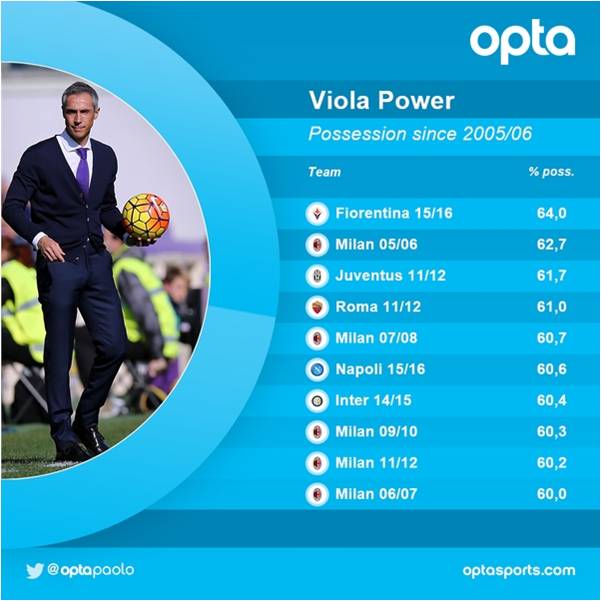
According to Opta stats, Fiorentina have posted a 64 % average possession figure in this Serie A, the highest in a season since 05/06.
KALINIC VALUE
On the offense, you can’t understimated the role and the value of No. 9 Kalinic. Former Dnipro’s striked leads the first line acting as lone forward. The Croatian has a rare ability to play staying diagonally to the ball with his body.
That made him able to be immediately in position to receive a forward pass.
A good way to check the value of Kalinic is is to look at his stats. Kalinic scored 7 goals out from 28 shots, 15 on target, performing an impressive average of 1 goal every four shots. Those stats also show the high quality of shots that he’s taking so far.
LA VIOLA IN DEFENCE
In defence, Fiorentina defend in a compact 4-4-2 with two bank of four.
On the flanks, Borja Valero collapses behind to become the left-wing in the four-man midfield.
At the same time, Alonso become the left full-back. Kalinic and Ilicic remain up top having the role of blocking passing lanes into the middle.
Paulo Sousa’s tactical approach is working so far and this defensive fluidity allow his side to face teams featuring three forwards.
Defensive lines are compact and the presence of Ilicic allow them to drop the attacker into more classic defending No. 10 role creating an adaptable 4-4-1-1, useful against teams lining up three central midfielders.
Fiorentina are also able to defend with the ball. Resting with the ball is a concept introduced by Jose Mourinho. Sousa follows his tought. If a team is out of possession, this force the squad to defend for extended periods, with a high cost in term of energy, both mentally and physically. On the other side, if your team got the ball, they can dicatate the tempo of the game
Another key part of Sousa’s defensive gameplan is the use of counterpressing. Counterpressing has generated a lot of attention recently, due to the success of Bayern Munich and Borussia Dortmund but it is still an unknown matter in Italy.
Paulo Sousa introduced it into Serie A circles. There are several tactical aspects to consider when you come to talk about counterpressing as not every counterpressing is the same.
Fiorentina play a man-oriented counterpressing, looking to cover immediately the passing options near to the ball carrier.
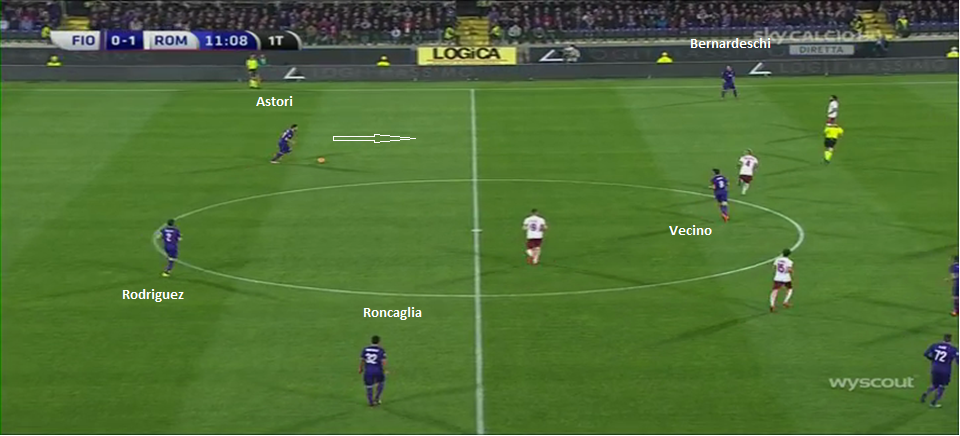
Fiorentina: with the central MFs marked, centre-backs are ready to step up to build the offensive phase.
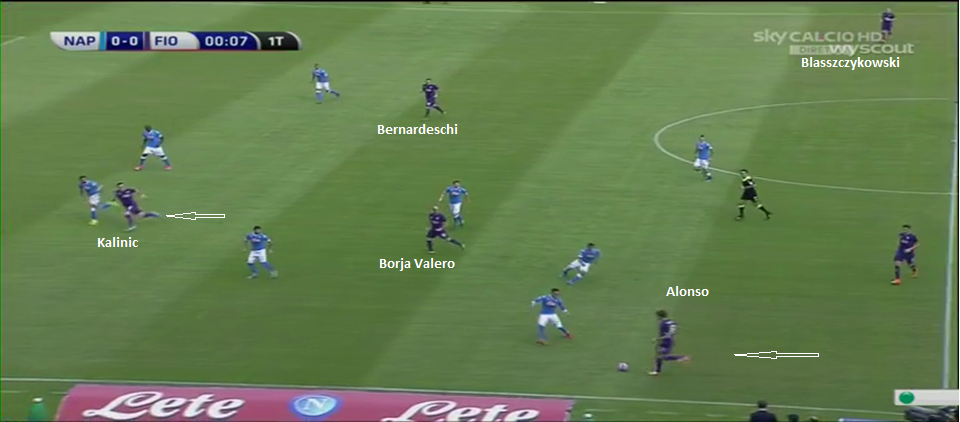
Fiorentina: offensively, Fiorentina move up the wing-backs in order to gain width, while the No. 10s play behind the No. 9 Kalinic.
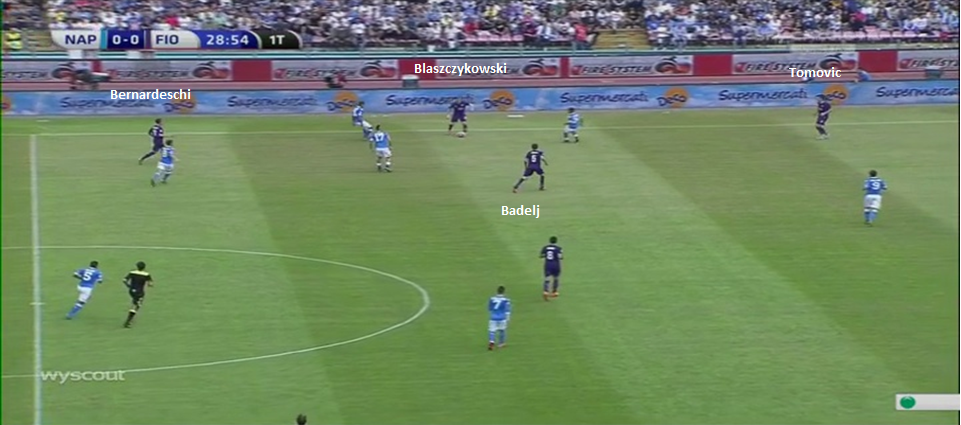
Fiorentina: against opponent pressing, Fiorentina is well placed and the ball carrier usually has many passing options at his disposal.
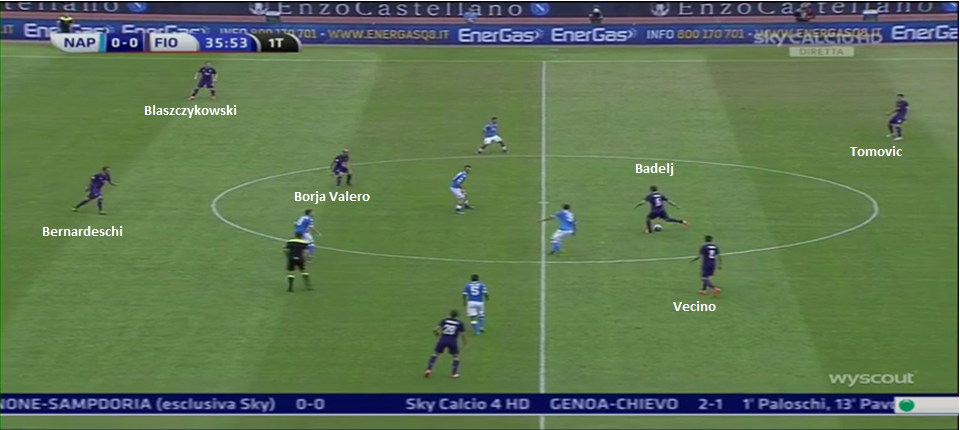
Fiorentina: another example of the many passing options at disposal of the ball carrier; CM Badelj can play a short pass to the other CM Vecino; pass through the lines to the No. 10s; switch the play laterally; play a safer ass back.
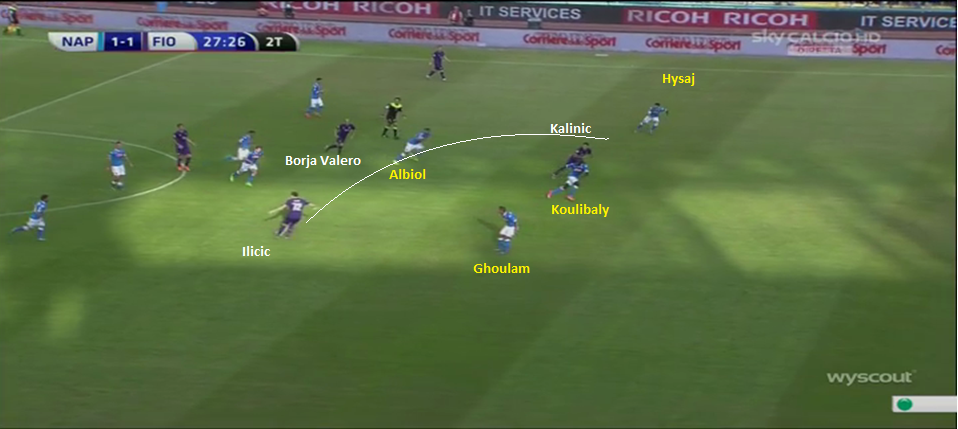
Fiorentina: combo between the No. 10s and Kalinic against Naples: CB Albiol went up to follow Borja Valero. Kalinic exploit the void receving Ilicic’s forward pass.
CONCLUSION
To conclude, Fiorentina are for real this season and it came as no surprise. Former coach, and now Sampdoria manager, Vincenzo Montella, built a strong core of gifted players in a possession style that is rarely to see over there. That said, one weakness in La Viola’s possession under Montella was the play in the final third as Fiorentina rarely translated it into goals or shots on goal. Under Paulo Sousa, Fiorentina are more able to reach more advanced field position and their orientation became much more vertically oriented. The result is they became more effective. At the end, Sousa built a more balanced squad who could set their run for Scudetto.
* Michele Tossani is a football analyst.

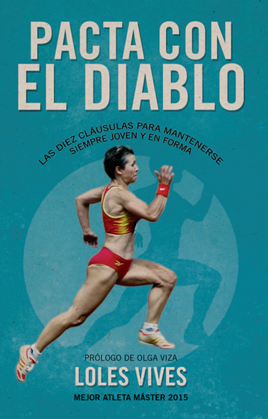
BUSCADOR DE CATEGORÍAS
BUSCADOR POR MES
ÚLTIMOS TWEETS
Tweets por @martiperarnauSÍGUENOS EN FACEBOOK




